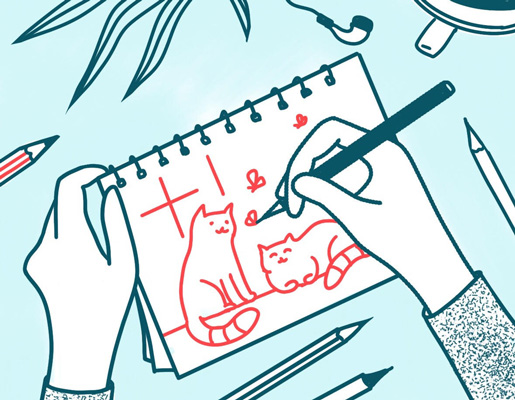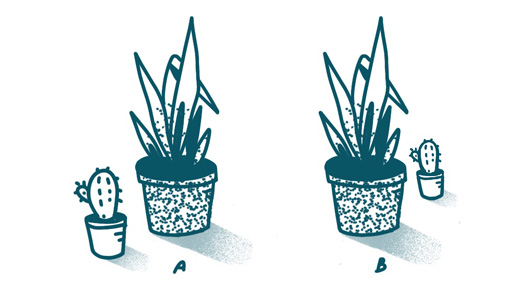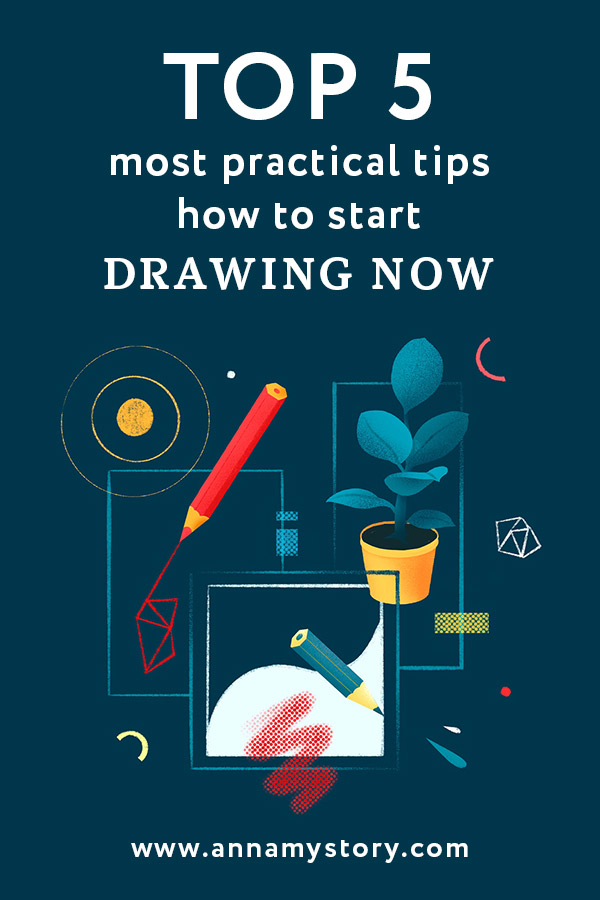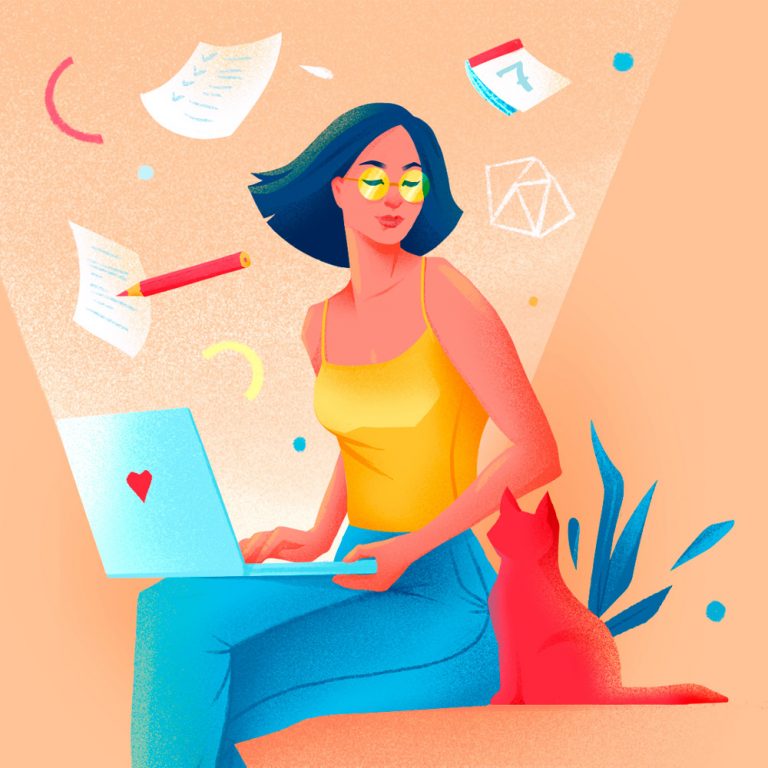Top 5 Most Practical Tips to Start Drawing Right Now
Whether you work in creative industry or not, drawing is definitely a useful skill to have. And it’s not just about artistic self-expression and creating art. Ability to draw and sketch will help you to visualize and explain your ideas easily. When you draw you pay attention to even the smallest details, which makes you an overall more observant about your everyday life. Not to mention that it provides a nice destruction from your daily routine.
However starting to draw be challenging initially. Especially because the first steps are the hardest; as the results may not be what you expect ‘em you to be. But don’t worry, in this post I’m sharing my 5 most practical tips which will help you to start your very own drawing journey and improve your skills even if you are a beginner.
1. Buy a Sketchbook
Many words have been said about the importance of having a sketchbook for artists. You definitely should get one as well. Especially in the beginning when you don’t want to invest in any fancy digital equipment like iPad Pro.
When I was a student, my tutor advised to have at least two of them. One should be an A5-A6 size to carry in your bag. And a bigger one for sketching at home.

I personally like to have my own space for drawing and doodling instead of some random pieces of paper. This way I can keep everything in one place and see my progress. Plus it’s just easier to keep your sketches private this way, no need to worry that someone will stumble upon your art, especially if you feel uncomfortable to show them yet.
Tips for choosing a good sketchbook:
- Sketchbook with heavy cover is a good choice for your field notes. It will not bend and you’ll be able to sketch practically on the go.
- Unlined sketchbooks with relatively thick paper are very nice for both pens and pencils. If the paper is smooth enough you can use eraser without being afraid to make a hole in your page.
- Spiral notebooks work best for me. They can bend flat and allow you to remove pages if necessary.
2. Start Small
In order not to get discouraged quickly I would not recommend start drawing with complex objects like people or animals.
While your hands are still getting used to drawing it’s a good practice to start with something easy. Make some doodles during work meetings or sitting in a cafe, try drawing simple things like circles, rectangles or abstractions. Just do it on a regular basis.

You don’t need to implement colors yet either. Working with a pencil/black pen is more than enough for a good start.
After you get more familiar with your instruments – start practicing live drawing.
3. Practice Live Drawing
Classic art school classes usually include drawing a still life composition. It can be fruits, drapery and other super inspiring objects J. But you don’t have to arrange apples in a bowl to make a proper still life study.
Start with everyday objects instead. A cup of tea, a plant in a pot, even your phone laying on the table are perfect objects for quick sketching.

If the weather is suitable you can greatly benefit from sketching outdoors. It’s not obligatory to leave your house for sketching in our busy world. But drawing from nature can provide you with fresh perspective and can be really fun. There are several great exercises for drawing outdoors which I will cover in further posts.
To make things more interesting you can try drawing the same object for 1 min, 3 min and 10 minutes. Try to catch it’s peculiarities and form. If you are a foodie it may be fun for you to sketch your breakfast in the mornings. Treat it like a game, not a struggle.
4. Explore the possibilities of Juxtaposition
To put it simple juxtaposition is placing two or more objects side-by-side creating a composition. It works best when choosing dissimilar objects with a certain contrast.

You can choose whatever objects you like, but it’s always more fun to choose interesting forms and combinations. So if you are drawing at home simply arrange several objects together as if you were going to take a shot.
To make this exercise more profound place the same objects in various position each time. Thus, you will have different compositions for drawing with already familiar items.
Depicting several objects side by side will give you useful insights in composition and perspective. You will notice how different sizes and textures work together, how shadows fall.
5. Practice Hatching and Outlines exercises

These are two handy exercises to improve your skills is drawing. They will make it easier to define forms of things for you.
Outlining is creating a clear outline of the objects, without adding shadows. This way you will learn how to convey forms and your lines will become more accurate. Any regular objects will do for it. If you are practicing live drawing – try working on skyline. Or take a photo as a reference. Just think about coloring books or black and white comics strips – that’s basically it J

Hatching on the other hand involves shadowing your forms with hatches. It helps you to explore different ways of adding volume and shadows to the objects. You can try different ways of hatching first. After you get comfortable with them move to actual drawing.

Conclusion
There are no techniques of how to start drawing suitable for everyone. We all are different by nature after all. The very same exercise that may inspire one person will probably bore to hell another one. But the methods I described above should help pretty much anyone, I find them more universal so to speak.
I strongly encourage you to try and choose what suits you the best and most of all have fun in the process.
Save in Pinterest for later 😉








